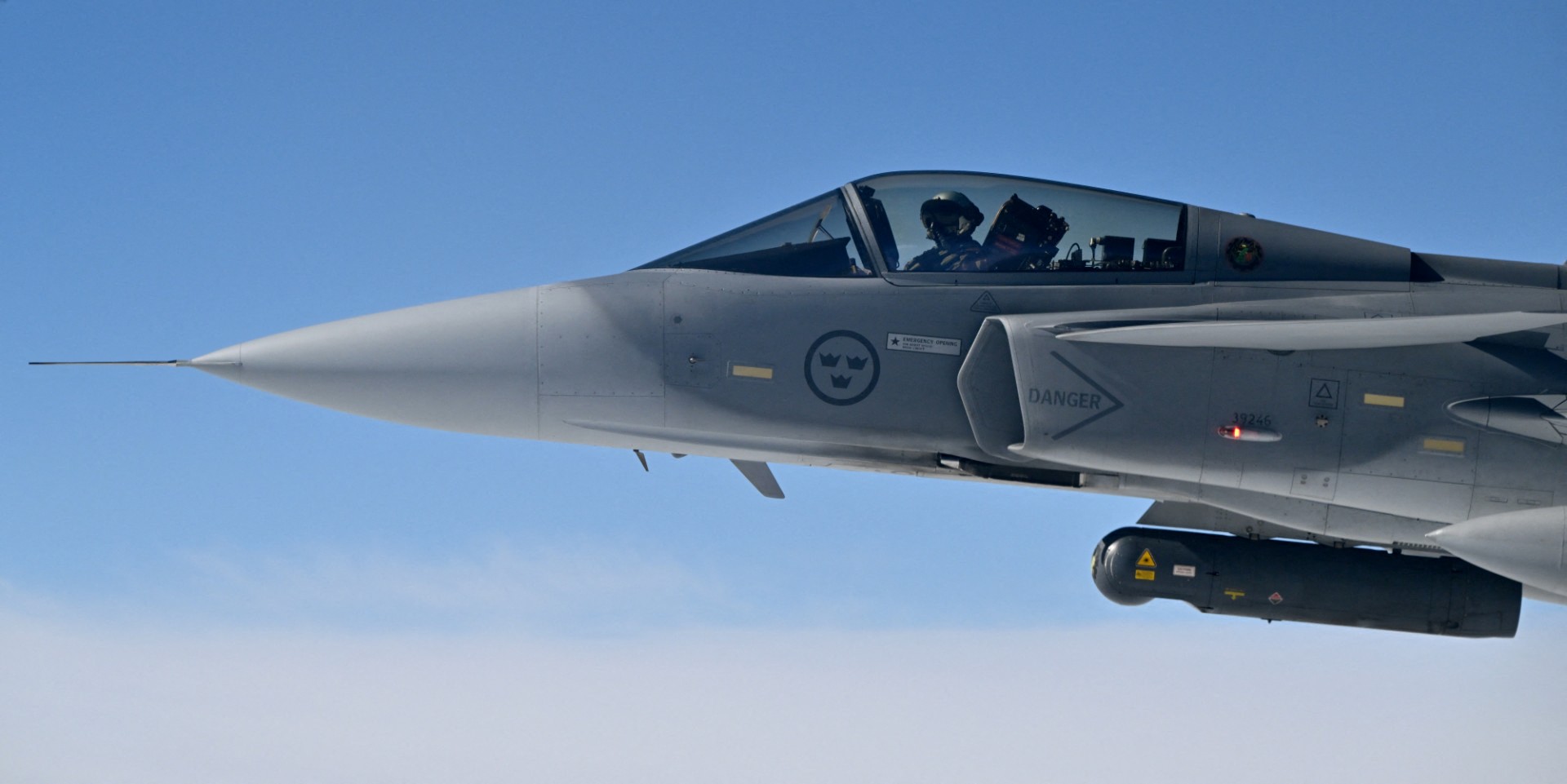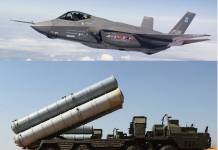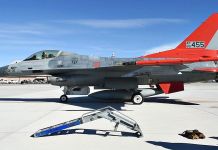Sweden is pushing ahead with its indigenous next-generation fighter jet program, in line with its tradition of self-reliance.
The Swedish Defense Materiel Administration (FMV) recently awarded Saab $276 million contract for conceptual studies for the next-generation fighter aircraft that will take place from 2025 to 2027.
The contract includes conceptual studies of manned and unmanned solutions in a system of systems perspective, and technology development and demonstrators, according to an official press statement published by Saab. For this, the company will collaborate closely with FMV, the Swedish Armed Forces, the Swedish Defence Research Agency, GKN Aerospace, and other industry partners.
This is the continuation of the contract awarded to SAAB in March 2024 for conceptual studies for crewed and uncrewed fighters, as previously reported by the EurAsian Times.
Last year, a Swedish official said that Phase 1 of the program will cover idea investigation, while Phase 2 will address concept and technology development. The primary areas of focus for the two phases were operational analysis, system concepts, and aircraft demonstrators, according to previous reports.
Like the previous contract, the new order also covers technology development and development of undisclosed demonstrators.
Although the program is in a very nascent stage with few details available publicly, it emphasizes a “system of systems” approach, potentially including both crewed and uncrewed platforms, rather than solely a traditional manned fighter.
Its design is expected to prioritise air dominance, incorporate advanced technologies like Artificial Intelligence (AI) and autonomy, operate in collaboration with loyal wingman drones, aligning with global trends in sixth-generation combat aviation.
According to some reports, Sweden’s next-generation fighter program is reportedly known as Framtida Stridsflygsystem (KFS) or FCAS within Saab. This acronym is similar to (but not the same as) the FCAS (Future Combat Air System) program pursued by France, Germany, and Spain. The Swedish FCAS is much younger compared to other contemporary sixth-generation initiatives.
Speaking about the latest contract, Lars Tossman, head of Saab business area Aeronautics, said, “This order sets the next step on our joint journey in delivering innovative solutions to meet future operational needs of the Swedish Armed Forces and other customers”.
This appears to be a clear indication that Sweden will promote the aircraft for export to friendly countries or perhaps invite them to collaborate in the program.
Notably, Sweden has been exploring the development of a next-generation aircraft for several years now. Earlier, Sweden was entirely focused on homeland defense, but now, it needs to reach much farther into the Atlantic Ocean to protect maritime supply lines. It would also need to address the challenges of anti-access/area-denial (A2/AD), improve situational awareness, and provide airborne early warning capabilities to face off against enemies like Russia and its allies.
Earlier in 2019, British Defence Secretary Penny Mordaunt and Swedish Defence Minister Peter Hultqvist signed a memorandum of understanding (MOU) to jointly develop future combat aviation technologies.
However, by 2023, differences arose over work sharing, and Michael Johansson, President and CEO of Saab, announced that the nation is currently in a “hibernation period” for the global project. “We are on the margins, and our involvement has not been as intensive as we thought it would be at first. We are not out of the program, but Sweden has hibernated while we see how the UK, Italy, and potentially Japan set up the program. I am not sure how this will play out,” he said at the time.
This was followed by a formal exit from the GCAP by November 2023.
Last month, reports suggested that amid disagreements over work sharing between France and Germany in the FCAS program, the German government was assessing the option of pursuing the project with Spain without France’s participation, or replacing France with another country, such as the UK or Sweden.
At the time, the EurAsian Times explained that since the UK is already working on a rival sixth-generation program, Sweden could prove to be a more feasible choice.
Sweden could potentially contribute to the FCAS through Saab, which manufactures the Gripen fighter and has experience with sensors, avionics, and lightweight airframes. However, there is no information on whether Germany has approached Stockholm for such a collaboration.
Sweden could either develop its own fighter or use the conceptual study to contribute to an existing program while becoming an equal partner. However, its long history of producing its fighter jets locally—from the Viggen in the 1970s to the Gripen in the 1990s—could eventually lead to a decision that prioritizes self-reliance (for full autonomy) in the next-generation fighter program as well.
Saab delivers First Gripen-E to Swedish Air Force
On October 20, 2025, the Skaraborg Wing (F 7) at Satenas air station, near Lidköping, received the first of the 60 Gripen E aircraft that the Swedish Air Force currently plans to induct.
The ceremony for the aircraft transfer was attended by representatives from the Ministry of Defense, the Armed Forces, the Swedish Defence Materiel Administration (FMV), and Saab.
The “Gripen E is not just an upgrade of previous versions but in many respects a completely new aircraft type,” said a news release issued by the Swedish Armed Forces (Försvarsmakten). It emphasised that the Gripen has actually been redesigned to meet the demands of the altered operational scenarios that the military may encounter in the future.
“It is a completely new system – built to meet future demands for survivability, range, sensors, and collaboration. It is the result of Swedish engineering and innovation with a clear focus on operational effectiveness,” said Mattias Ottis, the Commander of the Skaraborg Air Flotilla.
🇸🇪 The Swedish Armed Forces has officially received the first of many JAS 39 Gripen E fighters – marking a milestone for our Air Force and enhancing our capabilities to defend our skies. pic.twitter.com/PGipChvQDn
— Försvarsmakten (@Forsvarsmakten) October 20, 2025
The E-Series represents a continuation of the lineage that began with the original Gripen-A single-seat and Gripen-B two-seat variants.
Although the single-seat E-model’s outward design is largely similar to its predecessors, it offers several notable improvements and distinctions.
Saab describes the Gripen-E as “Designed to defeat any adversary. Made for forward-thinking air forces, Gripen E incorporates cutting-edge technologies, the latest systems, sensors, weapons, and pods to ensure combat advantage, delivering air superiority in highly contested environments. Silent networking and total sensor fusion across a tactical air unit to blind and confuse the enemy. One aircraft is active, the others go passive.”
Further, Saab promises that the Gripen-E redefines the rules of the game by allowing the first missile launch opportunity and the first kill. Saab claims its design represents a breakthrough, allowing it to swiftly integrate new hardware and update software applications to adapt to evolving mission requirements.

Further, the fighter jet incorporates more prominent air intakes, features the enhanced General Electric F414-GE-39E engine, and has 10 hardpoints (the mounting points or weapon stations on the airframe that carry weapons, ordnance, and support equipment like flares, countermeasures, targeting pods, or drop tanks). The Gripen-E’s avionics architecture stands out as a remarkable feature.
The Gripen-E doesn’t incorporate stealth design characteristics. Saab argues that this decision was made because of the speed at which hardware and software technologies are developing, which it predicts will increase the radar detection of stealth aircraft.
The Gripen is designed for quick field deployment, especially at remote bases. It can also be effectively maintained by a few people.
It also features highly sophisticated electronic warfare and communication systems, a new active electronically scanned array (AESA) radar, and the InfraRed Search and Track System (IRST). Saab says, “The E-series redefines air power for the 21st century by extending operational capabilities.”
- Contact the author at sakshi.tiwari13 (at) outlook.com
- Follow EurAsian Times on Google News




